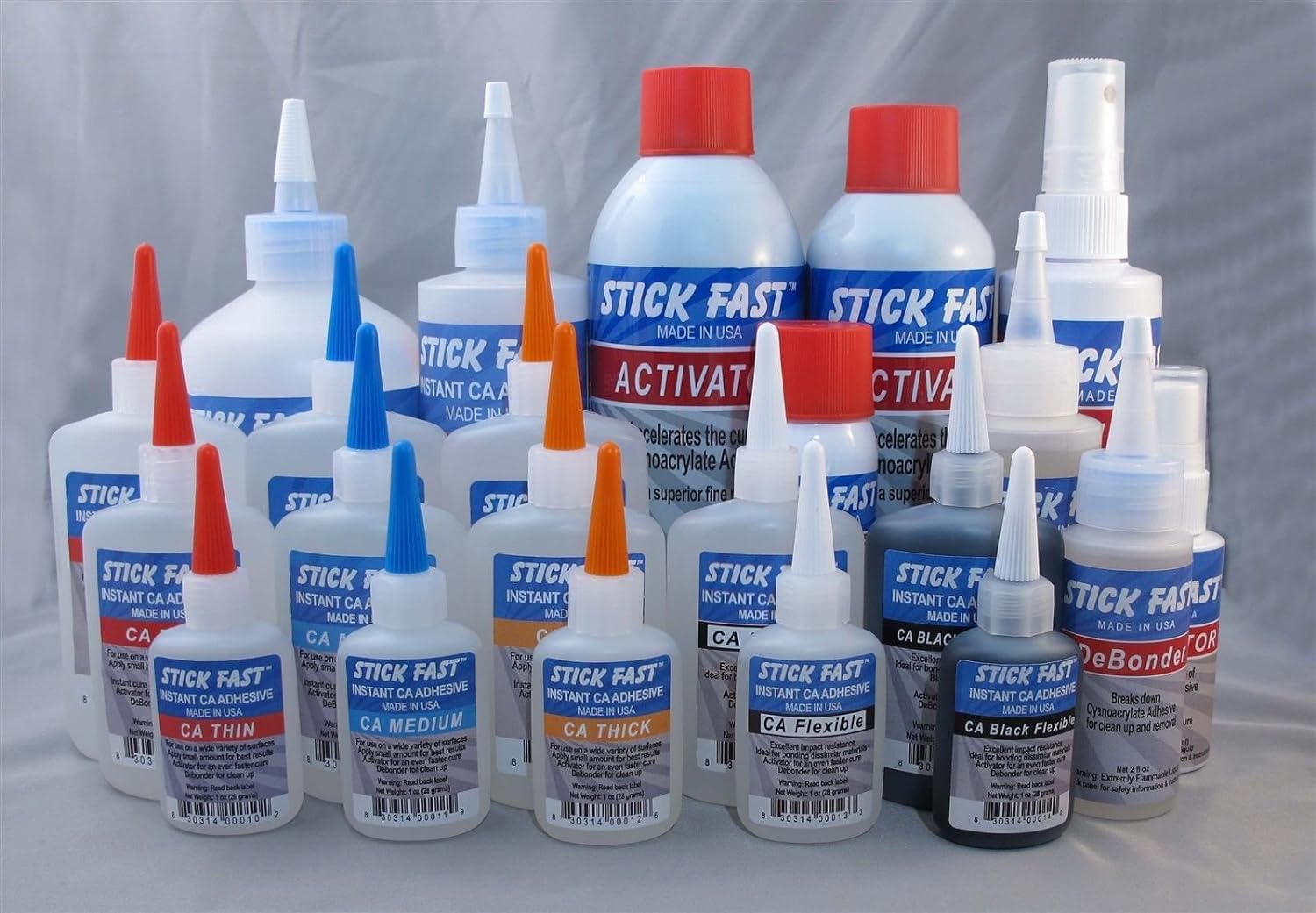

Articles
How To Store Ca Glue
Modified: August 28, 2024
Learn how to properly store and preserve your CA glue with our informative articles. Get expert tips and techniques for preserving the shelf life of your adhesive.
(Many of the links in this article redirect to a specific reviewed product. Your purchase of these products through affiliate links helps to generate commission for Storables.com, at no extra cost. Learn more)
Introduction
CA glue, also known as cyanoacrylate adhesive, is a versatile and popular adhesive used in various industries and applications. From woodworking projects to model building and DIY repairs, CA glue provides fast and strong bonding capabilities. However, to ensure the longevity and effectiveness of CA glue, proper storage is crucial. In this article, we will explore the importance of storing CA glue correctly and provide helpful tips on how to maintain its quality.
Proper storage not only helps to prolong the shelf-life of CA glue but also ensures consistent performance when it is needed. Storing CA glue improperly can cause it to become thick, clumpy, or even unusable. Factors such as temperature, humidity, light exposure, and contamination can all affect the quality of CA glue.
By implementing the recommended storage conditions and taking necessary precautions, you can avoid the frustration of a deteriorated CA glue and have it ready whenever you need it. Let’s dive deeper into the topic and discover the best practices for storing CA glue.
Key Takeaways:
- Proper storage of CA glue is crucial to maintain its quality and effectiveness. Follow recommended conditions, prevent contamination, and check for clumping to ensure reliable adhesive properties.
- Responsible handling and disposal of expired or unused CA glue are essential for safety and environmental protection. Prioritize safety and follow local regulations for proper disposal.
Read more: What Is Ca Glue For Woodworking
Understanding CA Glue
Before delving into the storage requirements for CA glue, it’s important to have a basic understanding of what CA glue is and how it works. CA glue is a type of fast-acting adhesive that creates a strong bond within seconds. It is composed of cyanoacrylate, a type of resin that rapidly polymerizes when exposed to moisture in the air.
CA glue is known for its incredible bonding strength and versatility. It adheres to a wide range of materials, including wood, metal, plastic, and ceramics. This makes it a go-to adhesive for various applications such as woodworking, model building, crafting, and even medical applications.
One of the key characteristics of CA glue is its fast-drying nature. It bonds quickly, allowing for efficient work and reduced waiting times. However, the rapid setting time also means that proper storage is crucial to maintain its usability. Exposure to external factors such as heat, humidity, light, and contaminants can negatively impact the quality and performance of CA glue.
Now that we have a better understanding of what CA glue is and its properties, let’s explore why proper storage is essential to maintain its effectiveness.
Importance of Proper Storage
The quality and effectiveness of CA glue can be heavily influenced by its storage conditions. Improper storage can lead to degradation, loss of bonding strength, and even render the glue unusable. Therefore, understanding the importance of proper storage is crucial for ensuring the longevity and performance of CA glue.
One of the main reasons why proper storage is essential is to prevent drying out or hardening of the glue. CA glue is highly sensitive to moisture, and exposure to air can cause the glue to cure or polymerize inside the container. This can lead to clumping or hardening of the glue, making it difficult, if not impossible, to use effectively.
In addition to preventing hardening, proper storage helps maintain the viscosity and flow characteristics of CA glue. If exposed to fluctuating temperatures, the glue can become too thin or too thick, altering its bonding properties. Temperature stability is vital to ensure that CA glue remains in its optimal state for a longer period of time.
Another significant factor to consider is the prevention of contamination. CA glue is susceptible to external contaminants, such as dust, dirt, and other substances. When contaminated, the adhesive can lose its adhesive properties or cause surface imperfections on the bonded materials. Proper storage helps minimize the risk of contamination and ensures that the glue remains clean and ready for use.
Proper storage also contributes to safety. CA glue is flammable, and storing it in the wrong conditions can increase the risk of accidents and fire hazards. By following the appropriate storage guidelines, you can reduce the potential risks associated with storing flammable substances.
Overall, proper storage is essential to maintain the quality, usability, and safety of CA glue. By ensuring suitable storage conditions, you can extend the shelf-life of the glue, maximize its bonding strength, and have a reliable adhesive on hand for your various projects and repairs.
Recommended Storage Conditions
To maintain the effectiveness and longevity of CA glue, it is important to store it under the right conditions. Here are the recommended storage conditions for CA glue:
Temperature:
CA glue should be stored in a cool and stable temperature environment. The ideal temperature range for storing CA glue is typically between 45°F (7°C) and 75°F (24°C). Avoid exposing the glue to extreme temperatures, as excessive heat or cold can affect its viscosity and bonding strength.
Read more: How To Store Gorilla Glue
Humidity:
It is crucial to store CA glue in a low-humidity environment. Excessive moisture in the air can cause the glue to cure prematurely or affect its bonding properties. To minimize exposure to humidity, consider using moisture-absorbing packets or silica gel packs in the storage area or container.
Light:
CA glue should be stored away from direct sunlight or bright artificial light. Exposure to UV radiation can cause the glue to cure or harden inside the container. Keep the glue in a dark or opaque container to protect it from light exposure.
Container:
Choose a suitable container for storing CA glue. The container should be made of glass or plastic, and preferably have an airtight seal to prevent air and moisture from entering. Ensure that the container is clean and free from any previous adhesive residue or contaminants.
Location:
Select a storage location that is away from heat sources, direct sunlight, and areas with high humidity, such as basements or bathrooms. A cool, dry, and well-ventilated area is ideal for preserving the quality of CA glue.
By following these recommended storage conditions, you can ensure that your CA glue remains in prime condition and ready for use when you need it. Taking the necessary precautions will help extend its shelf-life and maintain its adhesive properties.
Read more: How To Store Super Glue
Choosing a Suitable Container
When it comes to storing CA glue, selecting the right container is essential to maintain its quality and usability. Here are some factors to consider when choosing a suitable container:
Material:
It is advisable to use containers made of glass or plastic for storing CA glue. Avoid using metal containers, as they can react with the glue and compromise its effectiveness. Glass and plastic containers provide a stable and non-reactive environment for the glue.
Size:
The size of the container should be appropriate for the amount of CA glue you have. It is generally better to choose a container that is smaller or just slightly larger than the amount of glue you have. This helps minimize the amount of air inside the container, reducing the risk of premature curing or drying out.
Airtight Seal:
Ensure that the chosen container has an airtight seal. An airtight seal prevents air and moisture from entering the container, helping to maintain the quality and longevity of the CA glue. Look for containers with secure lids or caps that create a tight seal when closed.
Read more: Where Is Garden Grove Ca
Cleanliness:
Prior to storing CA glue, thoroughly clean the container to remove any adhesive residue or contaminants. Residue from previous adhesives can interfere with the performance of the CA glue or cause cross-contamination. A clean container ensures that the glue remains pure and free from any unwanted substances.
Labeling:
Once you have chosen a suitable container, it is important to label it properly. Clearly mark the container with the name of the adhesive (CA glue), the date of purchase or opening, and any other relevant information. This helps you keep track of the glue’s shelf-life and usage, ensuring that you use it within its recommended timeline.
Choosing the right container plays a significant role in preserving the quality and effectiveness of CA glue. By selecting a container made of the appropriate material, with an airtight seal, and keeping it clean and properly labeled, you can ensure that your CA glue remains in optimal condition for an extended period of time.
Keeping CA Glue Away from Heat Sources
Heat can have a detrimental effect on the quality and performance of CA glue. To ensure that your glue remains in its best condition, it is crucial to keep it away from heat sources. Here’s why and how to protect CA glue from heat:
Impact of Heat on CA Glue:
Exposing CA glue to high temperatures can cause it to deteriorate faster. Heat can accelerate the curing process, causing the glue to harden inside the container. This can lead to clumping, thickening, or a complete loss of bonding properties. Quality and effectiveness may be compromised, rendering the glue unsuitable for use.
Frequent exposure to heat can also reduce the shelf-life of CA glue. Over time, the heat can cause the glue to degrade, resulting in a shorter period of usability. To maximize the lifespan of your CA glue, it’s important to store it in a cool environment and avoid subjecting it to high temperatures.
Read more: How To Glue Broken Glass
Preventing Heat Exposure:
To protect your CA glue from heat, follow these guidelines:
- Store CA glue in a cool area: Choose a storage location that is away from direct sunlight, radiators, heaters, or any other heat-emitting sources. Keep the glue in a consistently cool environment to prevent exposure to high temperatures.
- Avoid storing in vehicles: Vehicles can become extremely hot, especially in hot climates or during the summer months. Avoid leaving CA glue in a vehicle, as the heat inside can quickly damage the glue.
- Consider a refrigerator for long-term storage: If you live in a particularly hot climate or want to extend the shelf-life of your CA glue, you can store it in a refrigerator. However, ensure that the glue is sealed in an airtight container and allowed to come to room temperature before using it.
By taking these precautions and keeping your CA glue away from heat sources, you can maintain its quality and effectiveness for a longer period of time. Proper storage in a cool environment helps to safeguard the adhesive properties and ensures that it is ready to perform when you need it.
Storing CA Glue in a Cool and Dry Place
When it comes to storing CA glue, creating the right environment is crucial for maintaining its quality and effectiveness. One of the key aspects of proper storage is keeping the glue in a cool and dry place. Here’s why it’s important and how to achieve it:
Importance of Cool and Dry Storage:
Temperature and humidity can have a significant impact on the performance and shelf-life of CA glue. Storing the glue in a cool and dry place helps to preserve its viscosity, prevent premature curing, and maintain its adhesive properties. Here are a few reasons why cool and dry storage is essential:
- Viscosity: CA glue has a specific viscosity that determines its flow characteristics. Excessive heat can cause the glue to thin out, making it more difficult to control during application. By storing it in a cool environment, you can maintain the desired viscosity, ensuring proper application and bonding.
- Premature Curing: High humidity can trigger the premature curing of CA glue. Moisture in the air can cause the glue to cure or polymerize inside the container, rendering it unusable. Storing CA glue in a dry environment minimizes the risk of premature curing and extends its shelf-life.
- Bonding Strength: Extreme temperatures and humidity can affect the bonding strength of CA glue. Exposure to high heat or moisture can weaken the adhesive properties, resulting in a less reliable bond. Keeping the glue in a cool and dry place ensures that it maintains its optimal bonding strength.
- Longevity: Proper storage in a cool and dry place helps to extend the shelf-life of CA glue. By minimizing exposure to factors that can degrade the glue, such as heat and moisture, you can prolong its usability and effectiveness.
Tips for Cool and Dry Storage:
Here are some tips to help you achieve a cool and dry storage environment for your CA glue:
- Choose the right location: Select a storage area that is away from heat sources, direct sunlight, and high humidity areas like basements or bathrooms. Ideally, store the glue in a well-ventilated room where the temperature is consistently cool.
- Avoid temperature fluctuations: Fluctuating temperatures can negatively impact the quality of CA glue. Try to maintain a stable temperature in the storage area, avoiding drastic temperature changes that can affect the glue’s viscosity and bonding properties.
- Use a dehumidifier: If you live in a particularly humid environment, consider using a dehumidifier in the storage area. This will help reduce excess moisture in the air and create a drier environment for storing CA glue.
- Keep the container sealed: Ensure that the container used to store the CA glue is tightly sealed. This prevents air and moisture from entering the container and affecting the glue’s quality. If the original container is damaged or not sealed properly, transfer the glue to a new, airtight container.
By storing your CA glue in a cool and dry place, you can maintain its viscosity, prevent premature curing, and ensure its long-term effectiveness. Taking these precautions will help you get the best performance out of your CA glue for your various projects and repairs.
Read more: How To Glue Glass To Wood
Avoiding Exposure to Light and Air
When it comes to storing CA glue, minimizing exposure to light and air is essential in maintaining its quality and effectiveness. Light and air can have detrimental effects on the glue, causing it to degrade or cure prematurely. Here’s why and how to avoid exposure to light and air:
Impact of Light and Air on CA Glue:
Exposure to light and air can cause several issues with CA glue, compromising its usability and adhesive properties. Here are some of the key reasons to avoid light and air exposure:
- Premature Curing: CA glue is sensitive to light and can cure or polymerize when exposed to ultraviolet (UV) radiation. This can cause the glue to harden or solidify inside the container, rendering it unusable. Exposure to air can also lead to premature curing of the glue, as moisture in the air can trigger the curing process.
- Degradation: Continuous exposure to light and air can degrade the quality of CA glue over time. The glue may become less effective, losing its adhesive properties and bonding strength. This can result in weaker and less durable bonds when the glue is eventually used.
- Viscosity: Exposure to light and air can also affect the viscosity of CA glue. The glue may become thicker or more viscous, making it challenging to apply or spread evenly. Maintaining the proper viscosity is essential for achieving optimal bonding results.
- Contamination: Airborne contaminants and dust particles can settle on the surface of the CA glue when left exposed. This contamination can interfere with the adhesive properties of the glue or cause imperfections on the bonded surfaces.
Tips to Avoid Exposure:
To protect CA glue from light and air exposure, follow these recommendations:
- Use opaque containers: Store CA glue in dark or opaque containers to shield it from direct light. This prevents UV rays from reaching the glue and reduces the risk of premature curing. Avoid using transparent containers, as they allow light to penetrate and potentially degrade the glue.
- Keep containers tightly sealed: Ensure that the containers used for storing CA glue are securely closed and airtight. This prevents air from entering and reduces exposure to oxygen, which can lead to degradation. Make sure to seal the container immediately after use to minimize contact with air.
- Store in a dark environment: Select a storage location that is away from direct sunlight and bright artificial light sources. Store the glue in a dark, cool, and dry area, such as a cabinet or drawer, to limit exposure to light and maintain its quality.
- Avoid prolonged opening: Limit the amount of time that the CA glue container remains open. The longer the container is exposed to air, the higher the risk of degradation or premature curing. Open the container only when necessary and close it promptly after use.
By taking these precautions and avoiding exposure to light and air, you can maintain the quality and usability of CA glue. Minimizing light and air exposure helps to prolong the shelf-life, ensures optimal viscosity, and preserves the adhesive properties for reliable bonding in your projects.
Preventing Contamination in the Storage Area
Preserving the cleanliness of the storage area is essential when it comes to storing CA glue. Contamination can compromise the quality and performance of the glue, leading to weakened bonds or other issues. Here are some tips to help prevent contamination in the storage area:
Read more: Where To See CA Wildflowers Now
Organize and Clean the Storage Space:
Maintaining a clean and organized storage area is crucial to prevent contamination of CA glue. Here’s what you can do:
- Remove debris and dust: Regularly clean the storage area to remove any debris, dust, or other particles that can contaminate the glue. Sweep or vacuum the floor, dust surfaces, and ensure that the storage containers are free from any external dirt.
- Designate a dedicated storage area: If possible, allocate a specific area solely for storing CA glue and related supplies. This helps minimize the risk of cross-contamination with other materials or substances that could compromise the glue’s quality.
- Separate from chemicals and solvents: Keep CA glue away from other chemicals and solvents, as they can potentially react with or contaminate the glue. Store CA glue in a separate area or on a dedicated shelf, away from any potentially reactive substances.
- Label containers: Clearly label containers to distinguish CA glue from other adhesives or substances. This helps prevent accidental use of the wrong adhesive and ensures that the glue remains untainted by other products.
Proper Handling and Preparation:
Properly handling and preparing CA glue can also help prevent contamination during storage. Consider the following tips:
- Use clean applicators: When applying CA glue, ensure that the applicators, such as brushes or syringes, are clean and free from any residues or contaminating substances. Contaminated applicators can introduce impurities into the glue, affecting its quality and performance.
- Wipe excess glue: After using CA glue, be sure to wipe off any excess adhesive from the container or the surface of the glue bottle. This prevents dried glue particles or residue from falling back into the container when it is sealed and stored.
- Close containers tightly: Always seal CA glue containers tightly after use to prevent any airborne contaminants from entering. This helps maintain the quality and cleanliness of the glue until the next use.
By practicing good storage habits, organizing and cleaning the storage area, and properly handling CA glue, you can prevent contamination and preserve the quality of the glue. These steps ensure that the glue remains pure and ready for use in your projects, without any compromise in its adhesive properties.
Checking for Clumping or Hardening of CA Glue
Regularly inspecting CA glue for clumping or hardening is crucial to ensure that it remains in usable condition. Over time, CA glue can deteriorate or solidify, making it ineffective for bonding purposes. Here’s how to check for clumping or hardening and what to do if you encounter these issues:
Visual Inspection:
Performing a visual inspection is the first step in checking for clumping or hardening of CA glue. Here’s what to look for:
- Clumps or solidified parts: Examine the glue for any visible clumps or solidified areas. These can manifest as thickened or gel-like sections within the glue. Clumps or solidified parts indicate that the glue has started to harden or cure prematurely.
- Change in color: CA glue is usually clear or transparent. If you notice a change in color, such as yellowing or cloudiness, it may be a sign of degradation or contamination.
- Unusual texture or consistency: Take note of any changes in the texture or consistency of the glue. If it appears lumpy, grainy, or has become thicker or thinner than normal, it could indicate clumping or hardening.
Testing the Bonding Strength:
In addition to a visual inspection, it’s important to test the bonding strength of the CA glue. This will help determine if the clumping or hardening has affected its adhesive properties. Here’s how to conduct a simple test:
- Choose a test surface: Select a small, inconspicuous area or scrap material to perform the test. Make sure it’s the same material that you would typically use the glue on, such as wood, plastic, or metal.
- Apply a small amount of glue: Apply a small, controlled amount of the potentially clumped or hardened glue onto the test surface. Spread it evenly with a clean applicator or a disposable brush.
- Wait for curing: Follow the curing time specified by the manufacturer for the specific type of CA glue you are using. Once the glue has cured, attempt to bond the test surface to a similar material and assess the strength of the bond.
- Observe the bond quality: Inspect the bonded area for any signs of poor adhesion, weakness, or failure. If the bond is weak or easily breaks, it may indicate that the clumping or hardening has compromised the glue’s effectiveness.
What to Do if Clumping or Hardening Occurs:
If you discover clumping or hardening in your CA glue, there are a few options to consider:
- Discard the glue: If the clumping or hardening is extensive, it is best to discard the glue and obtain a fresh supply. Attempting to use severely clumped or hardened glue may result in weak bonds or no bonding at all.
- Attempt to salvage the glue: If the clumping or hardening is minimal, you can try to salvage the glue by gently stirring it with a clean applicator or a toothpick. Mix the clumped areas with the surrounding adhesive until the consistency becomes uniform. However, use the salvaged glue cautiously, as it may have compromised adhesive properties.
Regularly checking CA glue for clumping or hardening allows you to identify potential issues and ensure that you have a reliable adhesive for your projects. If in doubt, it’s best to err on the side of caution and replace the glue to avoid any complications during application or bonding.
Properly Sealing and Labeling the Container
Properly sealing and labeling the container in which CA glue is stored is crucial for maintaining its quality and ensuring easy identification. Effective sealing helps prevent air and moisture from entering the container, while clear labeling helps you keep track of important information. Here are some guidelines for properly sealing and labeling the container:
Sealing the Container:
Ensuring an airtight seal is important to protect CA glue from air and moisture exposure. Here are some steps to properly seal the container:
- Clean the rim: Before sealing the container, make sure the rim or threads of the container are free from any residue or dried adhesive. Wipe off any excess glue to ensure a clean surface.
- Secure the lid or cap: Firmly secure the lid or cap onto the container, ensuring it fits snugly. Apply even pressure when closing the container to create a complete seal.
- Check for leaks: After sealing the container, inspect it for any signs of leaks. Gently squeeze the container or place it on a paper towel to see if any moisture or adhesive seeps out. In case of leaks, readjust the lid or cap to create a tight seal or transfer the glue to a different container.
- Store the container upright: To prevent accidental spills or leakage, store the container of CA glue in an upright position. This helps maintain the integrity of the seal and ensures that the glue remains contained.
Read more: How To Glue Electrical Conduit
Labeling the Container:
Clear and accurate labeling is essential for easy identification and proper management of CA glue. Here’s what to include when labeling the container:
- Name of the adhesive: Clearly indicate that the container holds CA glue. This helps differentiate it from other adhesives or substances.
- Purchase or opening date: Record the date of purchase or when the container was first opened. This information allows you to track the shelf-life of the glue and ensure timely usage.
- Additional details: You can include any additional information that is relevant to the CA glue, such as the brand or type of CA glue, curing time, or any specific instructions for use.
Tips for Labeling:
Consider these additional tips for effective labeling:
- Use a permanent marker or label maker: Utilize a permanent marker or label maker to ensure that the labeling is durable and won’t fade over time. This will help maintain the visibility and legibility of the information.
- Place the label prominently: Position the label in a visible and accessible location on the container. This makes it easy to identify the glue and read the important information without having to search for it.
- Re-label if needed: If the original label becomes illegible or outdated, replace it with a new label to ensure accurate information is maintained.
Properly sealing and labeling the container of CA glue helps maintain its quality, protects it from air and moisture exposure, and allows for easy identification and management. By following these guidelines, you can ensure that your CA glue remains in optimal condition for future use.
Handling and Disposing of Expired or Unused CA Glue
Knowing how to handle and dispose of expired or unused CA glue is important for both safety and environmental reasons. Expired or ineffective CA glue may not provide the desired bonding strength, and improper disposal can have negative impacts on human health and the environment. Here are some guidelines for handling and disposing of expired or unused CA glue:
Identifying Expired CA Glue:
Expired CA glue may exhibit various signs that indicate its ineffectiveness. Here’s what to look for:
- Change in consistency or color: Expired CA glue may become thick, clumpy, or discolored compared to its original state. Changes in consistency and color can indicate a loss of adhesive properties.
- Weakened bonding strength: If the CA glue consistently fails to provide strong and durable bonds, it may be expired or deteriorated.
- Expiration date: Check for an expiration date on the glue container. Most CA glues have a limited shelf-life, and if the expiration date has passed, it is best to consider it expired.
Read more: How To Glue Paper To Glass
Handling Expired or Unused CA Glue:
When handling expired or unused CA glue, consider the following precautions:
- Limit exposure: Minimize contact with expired CA glue to avoid potential skin irritation or allergic reactions. Wear protective gloves and work in a well-ventilated area when handling or assessing the glue.
- Isolate and store: Keep the expired or unused CA glue in a designated container or separate area to prevent accidental use or contamination.
- Avoid mixing with fresh glue: Do not mix expired or unused CA glue with a fresh supply. This could compromise the performance of the fresh glue.
Disposing of Expired or Unused CA Glue:
Dispose of expired or unused CA glue in a responsible and environmentally-friendly way. Here are some methods to consider:
- Check local regulations: Verify the regulations and guidelines set by your local municipality regarding the disposal of adhesives. Some areas may have specific instructions or collection points for adhesive disposal.
- Solidify before disposal: If the amount of CA glue is small, you can solidify it before disposal to minimize leakage and contamination. Mixing sawdust or cat litter with the glue can help solidify it, making it safer for disposal.
- Household hazardous waste collection: Inquire about household hazardous waste collection services in your area. These services often accept adhesives and other hazardous substances for proper disposal.
- Chemical recycling centers: Look for specialized chemical recycling centers or facilities that accept expired or unused adhesives. These centers can handle the disposal in an appropriate and environmentally responsible manner.
Always Prioritize Safety:
Remember to prioritize safety when handling and disposing of expired or unused CA glue. Follow precautionary measures and guidelines provided by local authorities to ensure the proper handling and disposal of the adhesive.
By responsibly handling and disposing of expired or unused CA glue, you contribute to a safer working environment and help protect the environment from potential contamination.
Conclusion
Proper storage of CA glue is of utmost importance to maintain its quality, effectiveness, and shelf-life. By following the recommended storage conditions, such as storing the glue in a cool and dry place, away from heat sources and light exposure, you can ensure that the glue remains in optimal condition and ready for use when needed. Preventing contamination in the storage area and regularly checking for clumping or hardening are crucial steps to preserve the adhesive properties of CA glue. Properly sealing and labeling the container ensures airtight storage and easy identification of the glue.
Handling and disposing of expired or unused CA glue should be done with caution and in accordance with local regulations. Identifying expired glue and taking appropriate measures in handling and disposal help minimize risks to human health and the environment.
By maintaining proper storage practices and adhering to safe handling and disposal methods, you can ensure that your CA glue remains reliable, effective, and environmentally responsible. Whether you use CA glue for woodworking projects, model building, or DIY repairs, taking the time to understand and implement these storage and handling practices will lead to better results and a longer lifespan for your CA glue.
Remember, CA glue is a versatile adhesive with remarkable bonding capabilities when stored and handled properly. By giving it the care and attention it deserves, you can make the most of its fast and strong bonding properties for all of your projects and repairs.
Frequently Asked Questions about How To Store Ca Glue
Was this page helpful?
At Storables.com, we guarantee accurate and reliable information. Our content, validated by Expert Board Contributors, is crafted following stringent Editorial Policies. We're committed to providing you with well-researched, expert-backed insights for all your informational needs.
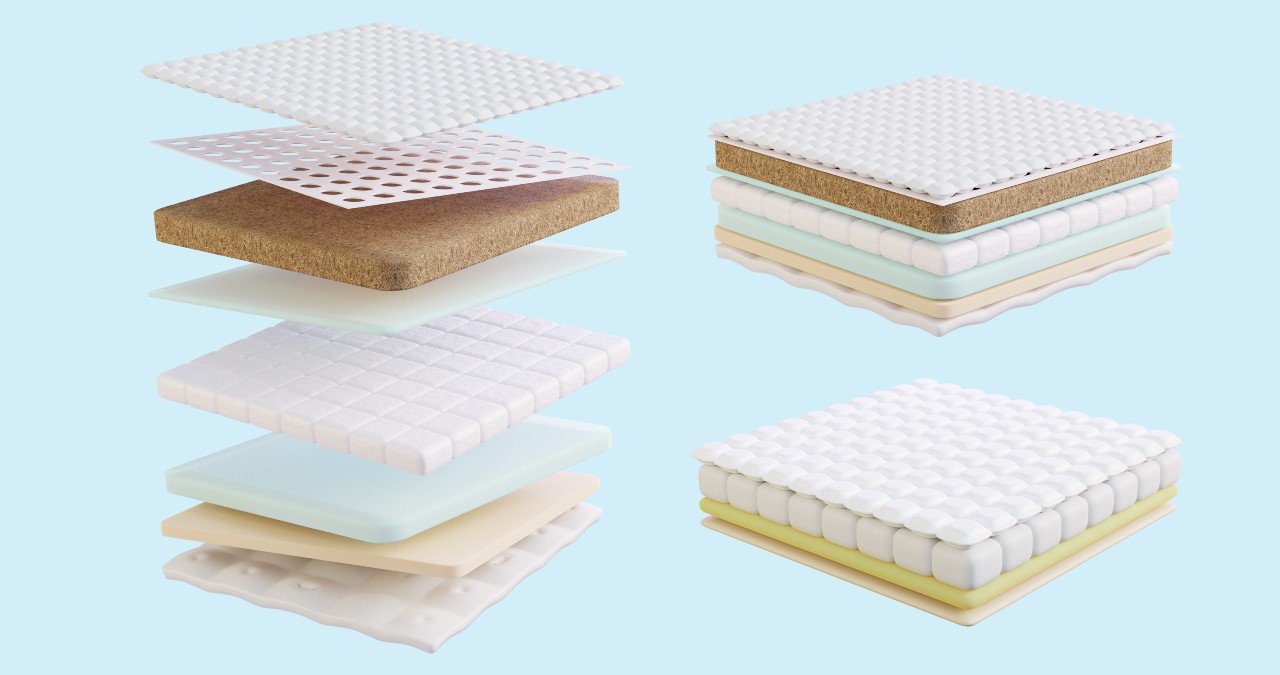
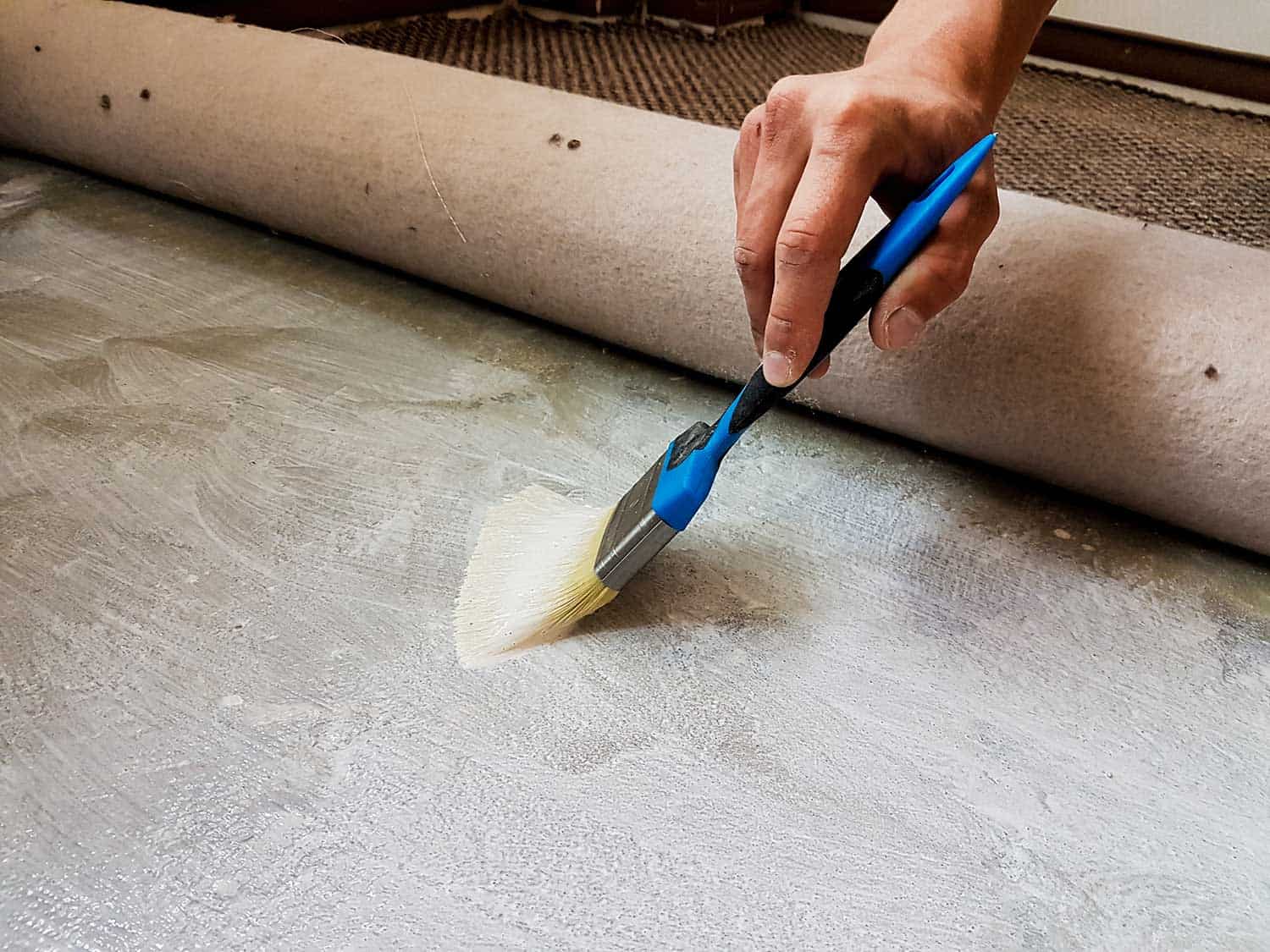
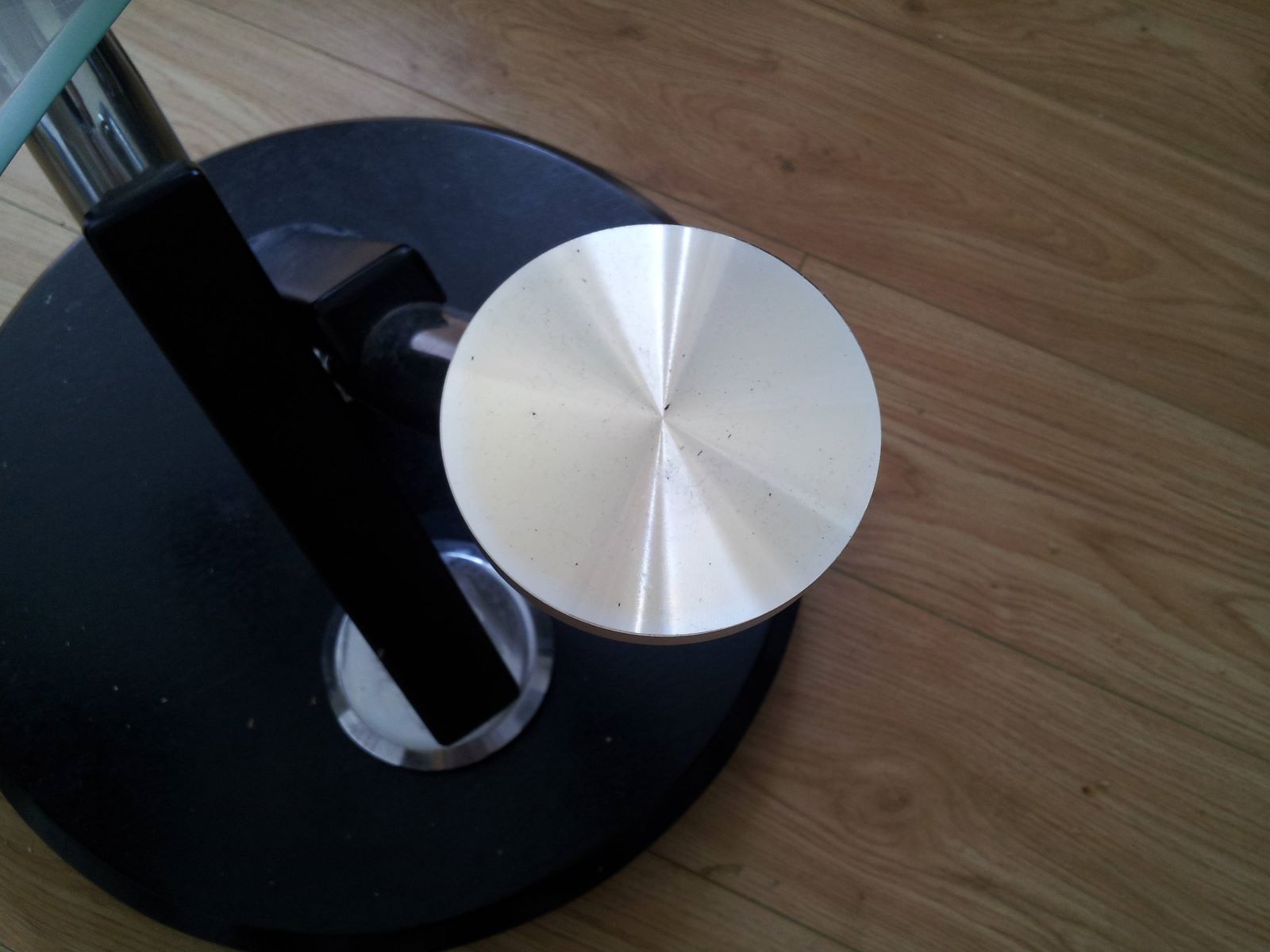


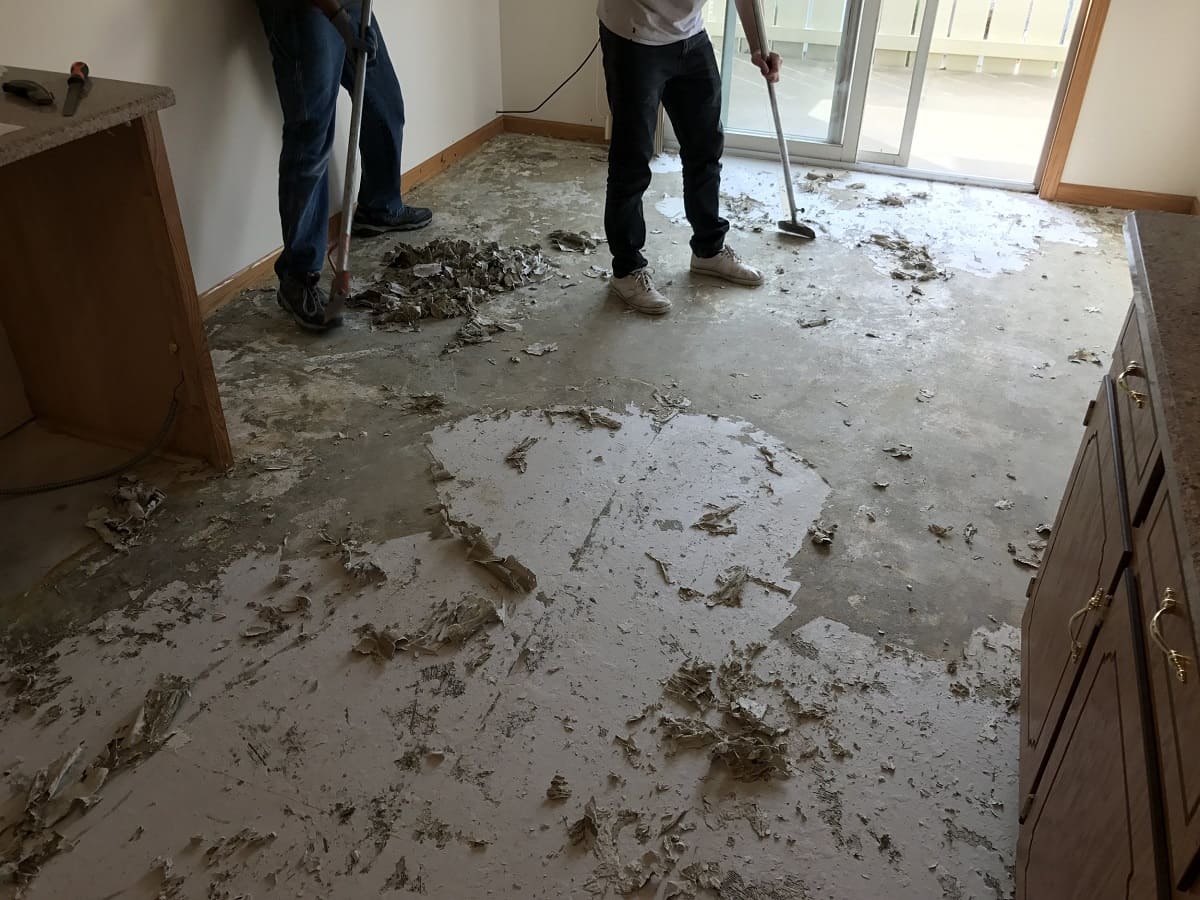

0 thoughts on “How To Store Ca Glue”